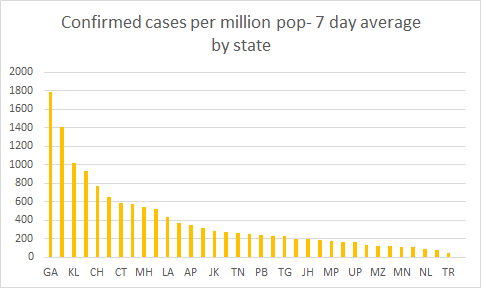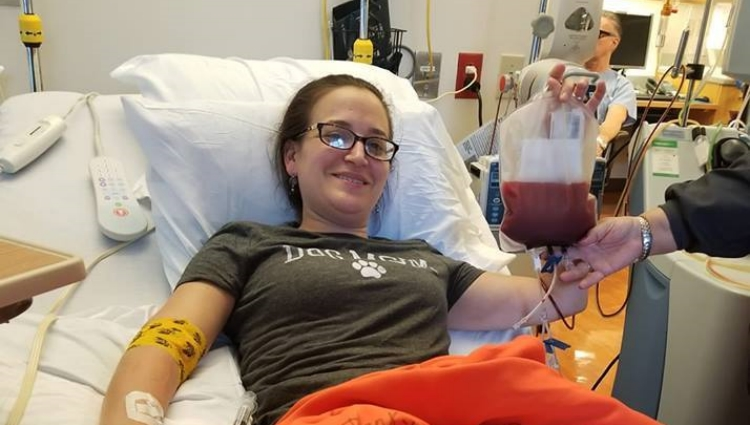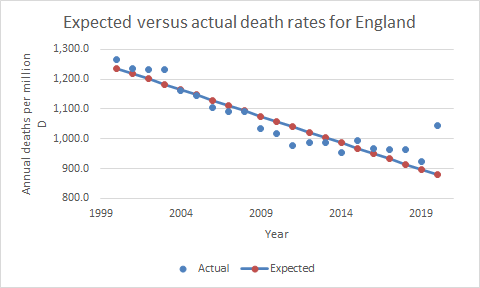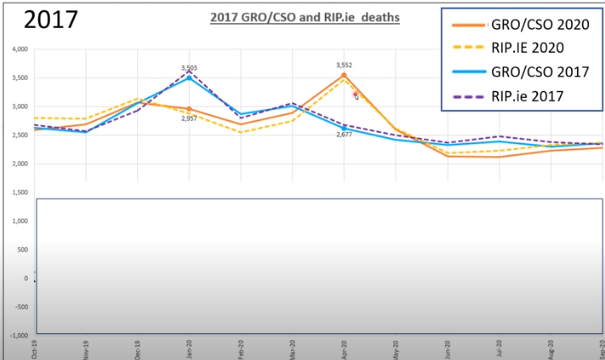On the 16th November The Daily Sceptic published an article by Chris Morrison with the headline:
Billionaire Funds the Guardian to Tune of $116 Per Reader of Print Edition
I want to use this as an example of how DS sceptics are selective about where they apply their scepticism (most of the points I am making here I already made in comments about the article but few people read all the comments)..
The article is an extract of information from what Chris describes as a:
sensational and wide-ranging report from journalist Ben Pile.
The billionaire in question is Bill Gates and the funding is grants from the Bill and Melinda Gates Foundation (BMGF). The overall message is that although the Guardian criticises the right-wing press for being backed by billionaires it is also backed by liberal billionaires who potentially influence its content.
A little inspection reveals that Pile’s case is incredibly weak to the point of absurdity.
As a relatively minor error Pile (and thus the headline) confuses circulation (the number of printed copies sold or given away) with readership (most copies are read by more than one person). The Guardian print circulation is about 100,000 but according to Hurst Media readership is about five times that. So, the funding is actually about $20 per reader.
However, this is a mere detail. The key point is that $12 million is the total grants ever given by BMGF to the Guardian since the BMGF’s foundation in 1994. There have been four such grants:
2011 $5,686,494 to support an online micro-site focused on providing compelling, evidence-based content, discussion and debate on the Millennium Development Goals and related health and development themes.
2017 $2,893,865 to support the global coverage on economic opportunity and empowerment for women and girls and other critical global development and health issues.
2018 $150,000 to support the global coverage on youth demographics in the Global South and implications for global development and health issues
2020 $3,499,032 to support The Guardian to produce regular reporting on global health and development topics in its Global Development section
The Guardian group annual turnover is in the order of £250 million. So in the 12 odd years since the first grant it has had a total income of about £3 billion. The BMGF grants amount to less than 1% of the total Guardian income in that period. Compare this to papers such as The Telegraph, Express, Mail and the Murdoch group which have until recently been owned by billionaires. It is possible that behind the scenes Bill Gates is dictating Guardian policy but he isn’t doing it through BMGF grants.
The article also notes that other organisations have received sizable gifts and BBC has received a “handsome” $58 million. However, this again corresponds to all the money BMGF has donated since the foundation began and almost all the grants ($54m) are to BBC Media Action a charity run by the BBC. I have listed the grants below and their purpose. You have to be very imaginative to find anything sinister in funding BBC Media Action to “prevent HIV/AIDS transmission in high prevalence districts of four Indian states by using mass media to promote condom use”
Although I am a lone critical voice in the comments section, believe it or not, I enjoy reading the Daily Sceptic and look at it every day. It brings to my attention facts and ideas that otherwise I would miss and challenges my liberal assumptions. I believe in a sceptical approach to every source of information and DS helps me sustain that. However, every source means every source. Much of DS scepticism seems only to be applied to sources that authors disagree with. Chris has not applied any scepticism to the Pile report. He has simply reiterated the key points.
List of grants from BMGF to BBC Media Action.
2006-08 $394,601 to inform and contribute to professional media training by supporting improved provision of and access to information regarding global health
2006-11 $6,392,782 to prevent HIV/AIDS transmission in high prevalence districts of four Indian states by using mass media to promote condom use
2009-03 $1,323,302 to support improved media coverage of development issues in Africa through a facility to coordinate and streamline media development investments, research, and activities across the continent
2010-12 $27,637,483 to shape demand and social norms and improve family health practices in Bihar, through an integrated and sustainable communication strategy, empowering those who currently lack the information to make informed decisions about their health
2013-11 $4,179,158 to implement an effective, integrated, and sustainable multi-channel communication strategy to increase early care-seeking for childhood pneumonia and diarrhea in two Northern Nigerian states
2014-11 $511,282 to leverage high and growing mobile phone penetration in India to provide a national platform for mobile health services capable of mobilizing large-scale changes in knowledge, attitudes and behavior on key maternal, newborn and child health and family planning issues
2015-01 $1,449,689 to leverage high mobile phone penetration in India to provide a national platform for mobile health services to mobilize changes in knowledge, attitudes and behavior on key maternal, newborn and child health and family planning issues
2015-11 $510,474 to document case stories of communities which have successfully eradicated or reduced open defecation in India so that stakeholders can better learn about what works and why, with the aim of replicating these successes elsewhere
2016-10 $1,396,647 to support the Government of India in design, development, implementation and evaluation of strategic and effective sanitation communications focusing on behaviour change, reducing open defecation and management of faecal sludge
2017-11 $1,874,283 to support the training and refresh knowledge of 200,000 rural sanitation facilitators across eight states in India using an on-demand IVR driven curriculum
2018-05 $599,974 to support the State Health Society and ICDS in Bihar for delivering Mobile Kunji for AWWs and ASHAs and Mobile Academy for AWWs, use the call center to promote usage and to provide technical support to Government of Bihar to take over the services
2019-03 $3,198,524 To create effective social and behaviour change communication interventions to shape demand and practices on Faecal Sludge Management in four focus states, and leverage government resources to disseminate them.
2019-08 $2,034,790 to help us learn deepen our underpinning of processes and user journeys for different sets of women’s empowerment collectives, develop use cases for where digital can help amplify effects bring efficiencies, and close gender gaps for women
2020-11 $1,010,356 to demonstrate the strengths and ease of use for D2C platform in the context of IEC and BCC across different program areas
2021-11 $961,854 to develop and broadly deploy multi-faceted messaging targeting 30% of Nigerians (aged 15+) with the intent of countering misinformation and disinformation and considerably increasing Covid-19 vaccine uptake
2022-11 $868,395 to understand social norms that impact the mobile gender gap










